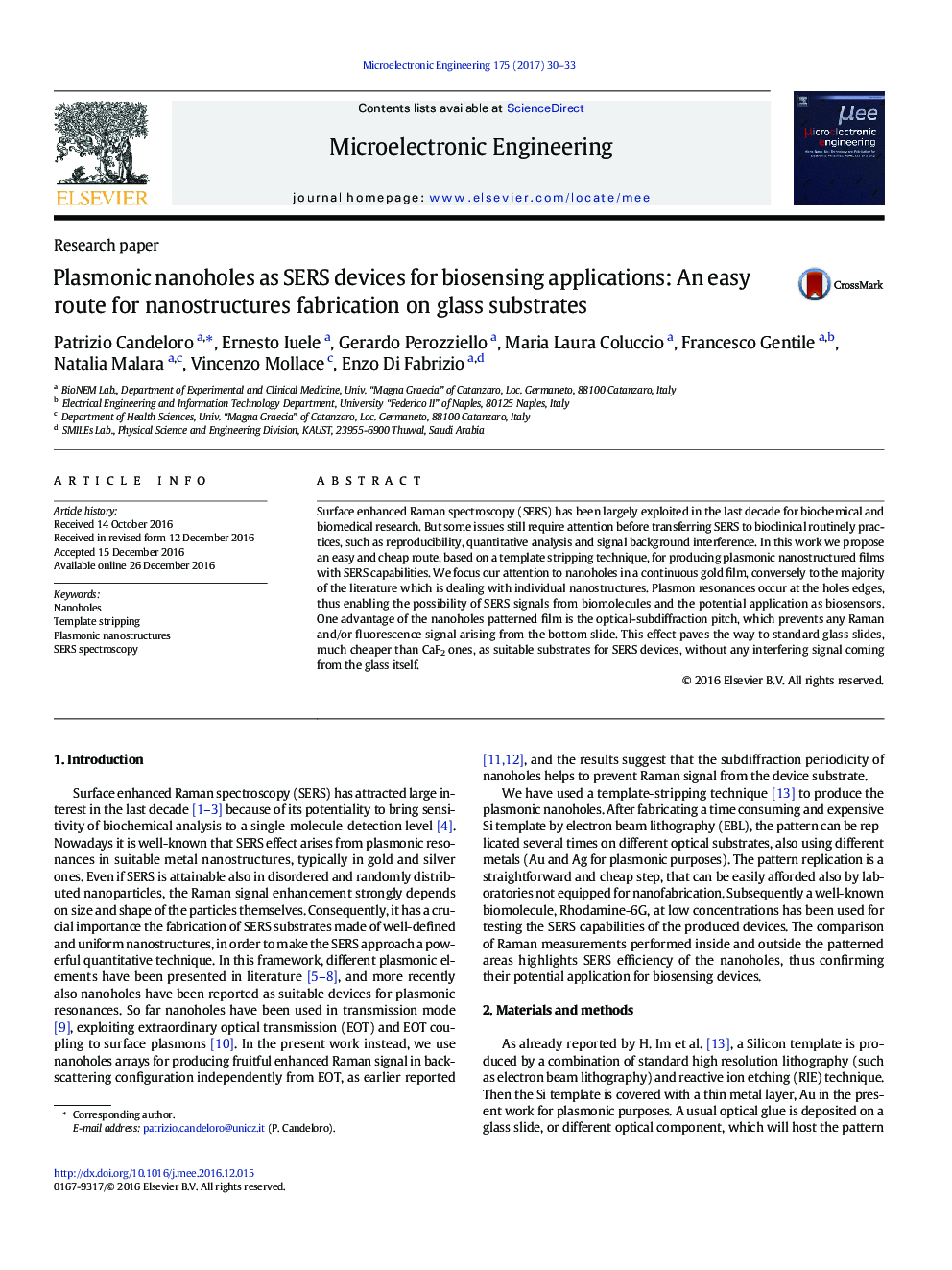| Article ID | Journal | Published Year | Pages | File Type |
|---|---|---|---|---|
| 4971000 | Microelectronic Engineering | 2017 | 4 Pages |
Surface enhanced Raman spectroscopy (SERS) has been largely exploited in the last decade for biochemical and biomedical research. But some issues still require attention before transferring SERS to bioclinical routinely practices, such as reproducibility, quantitative analysis and signal background interference. In this work we propose an easy and cheap route, based on a template stripping technique, for producing plasmonic nanostructured films with SERS capabilities. We focus our attention to nanoholes in a continuous gold film, conversely to the majority of the literature which is dealing with individual nanostructures. Plasmon resonances occur at the holes edges, thus enabling the possibility of SERS signals from biomolecules and the potential application as biosensors. One advantage of the nanoholes patterned film is the optical-subdiffraction pitch, which prevents any Raman and/or fluorescence signal arising from the bottom slide. This effect paves the way to standard glass slides, much cheaper than CaF2 ones, as suitable substrates for SERS devices, without any interfering signal coming from the glass itself.
Graphical abstractDownload high-res image (252KB)Download full-size image
